Search results for 'GU'
-

CYB/130 Week 3 Python LAB 4.15: Password modifier
Regular Price: $8.00
Special Price $3.00
CYB/130 Week 3 Python LAB 4.15: Password modifier
Many user-created passwords are simple and easy to guess. Write a program that takes a simple password and makes it stronger by replacing characters using the key below, and by appending "q*s" to the end of the input string.
i becomes !
a becomes @
m becomes M
B becomes 8
o becomes .Ex: If the input is:
mypassword
the output is:
Myp@ssw.rdq*sHint: Python strings are immutable, but support string concatenation. Store and build the stronger password in the given password variable.
Learn More -
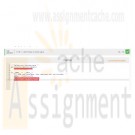
CYB/130 Week 4 Python LAB 5.18: Miles to track laps
Regular Price: $8.00
Special Price $3.00
CYB/130 Week 4 Python LAB 5.18: Miles to track laps
One lap around a standard high-school running track is exactly 0.25 miles. Write the function miles_to_laps() that takes a number of miles as an argument and returns the number of laps. Complete the program to output the number of laps.Output each floating-point value with two digits after the decimal point, which can be achieved as follows:
print('{:.2f}'.format(your_value))Ex: If the input is:
1.5
the output is:
6.00Ex: If the input is:
2.2
the output is:
8.80Your program must define and call the following function:
Learn More
def miles_to_laps(user_miles) -
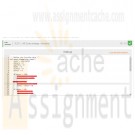
CYB/130 Week 4 Python LAB 5.23: Exact change - functions
Regular Price: $8.00
Special Price $3.00
CYB/130 Week 4 Python LAB 5.23: Exact change - functions
Write a program with total change amount as an integer input that outputs the change using the fewest coins, one coin type per line. The coin types are dollars, quarters, dimes, nickels, and pennies. Use singular and plural coin names as appropriate, like 1 penny vs. 2 pennies.Ex: If the input is:
0
or less, the output is:
no changeEx: If the input is:
45
the output is:
1 quarter
2 dimesYour program must define and call the following function. The function exact_change() should return num_dollars, num_quarters, num_dimes, num_nickels, and num_pennies.
Learn More
def exact_change(user_total)
Note: This is a lab from a previous chapter that now requires the use of a function. -
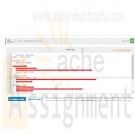
CYB/130 Week 2 Python LAB 3.27: Exact change
Regular Price: $8.00
Special Price $3.00
CYB/130 Week 2 Python LAB 3.27: Exact change
Write a program with total change amount as an integer input, and output the change using the fewest coins, one coin type per line. The coin types are Dollars, Quarters, Dimes, Nickels, and Pennies. Use singular and plural coin names as appropriate, like 1 Penny vs. 2 Pennies.Ex: If the input is:
0
(or less than 0), the output is:
No changeEx: If the input is:
Learn More
45
the output is:
1 Quarter
2 Dimes -
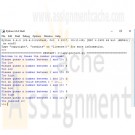
CIS115 Course Project Guess The Number
Regular Price: $15.00
Special Price $12.00
CIS115 Course Project Guess The Number
You will create a program that will ask the user to guess a number between 1 and 10. The pseudocode is below. Be sure to import random at the beginning of your code and use a comment block explaining what your program does
#Guess the number week 4
#Name:
#Date:
#Random number, loop while true
#ask user for number.
#if number is too high or too low, tell user, if they guessed it break out of loopDisplay "Welcome to my Guess the number program!"
random mynumber
while True
Display "Guess a number between 1 and 10"
Get guess
if (guess<mynumber)
Display "Too low"
else if (guess>mynumber)
Display "Too high"
else if (guess==mynumber)
Display "You guessed it!"When you run your program the result should be something like this:
Welcome to my Guess the number program!Please guess a number between 1 and 10: 5
Too high
Please guess a number between 1 and 10: 4
Too high
Please guess a number between 1 and 10: 3
Too high
Please guess a number between 1 and 10: 2
You guessed it!Be sure to submit your assignment
Learn More -

DAT/210 Week 2 Java LAB 3.19: Exact change
Regular Price: $7.00
Special Price $3.00
DAT/210 Week 2 Java LAB 3.19: Exact change
Write a program with total change amount in pennies as an integer input, and output the change using the fewest coins, one coin type per line. The coin types are Dollars, Quarters, Dimes, Nickels, and Pennies. Use singular and plural coin names as appropriate, like 1 Penny vs. 2 Pennies.
Ex: If the input is:
0
the output is:
No changeEx: If the input is:
45
the output is:
1 Quarter
2 Dimes
import java.util.Scanner;public class LabProgram {
Learn More
public static void main(String() args) {
/* Type your code here. */
}
} -
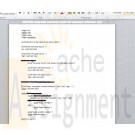
IT 140 Higher/Lower Game Pseudocode Project One
Regular Price: $8.00
Special Price $5.00
IT 140 Higher/Lower Game Pseudocode Project One
Higher/Lower Game Description
Your friend Maria has come to you and said that she has been playing the higher/lower game with her three-year-old daughter Bella. Maria tells Bella that she is thinking of a number between 1 and 10, and then Bella tries to guess the number. When Bella guesses a number, Maria tells her whether the number she is thinking of is higher or lower or if Bella guessed it. The game continues until Bella guesses the right number. As much as Maria likes playing the game with Bella, Bella is very excited to play the game all the time. Maria thought it would be great if you could create a program that allows Bella to play the game as much as she wants.For this assignment, you will be designing pseudocode for a higher/lower game program. The higher/lower game program uses similar constructs to the game you will design and develop in Projects one and Two.
1) Review the Higher/Lower Game Sample Output for more detailed examples of this game. As you read, consider the following questions:
What are the different steps needed in this program? How can you break them down in a way that a computer can understand?
What information would you need from the user at each point (inputs)? What information would you output to the user at each point?
When might it be a good idea to use "IF" and "IF ELSE" statements?
When might it be a good idea to use loops?2) Create a pseudocode that logically outlines each step of the game program so that it meets the following functionality:
Prompts the user to input the lower bound and upper bound. Include input validation to ensure that the lower bound is less than the upper bound.
Generates a random number between the lower and upper bounds
Prompts the user to input a guess between the lower and upper bounds. Include input validation to ensure that the user only enters values between the lower and upper bound.
Prints an output statement based on the guessed number. Be sure to account for each of the following situations through the use of decision branching:
What should the computer output if the user guesses a number that is too low?
What should the computer output if the user guesses a number that is too high?
What should the computer output if the user guesses the right number?
Loops so that the game continues prompting the user for a new number until the user guesses the correct number.OPTIONAL: If you would like to practice turning your designs into code, check out the optional 9.1 LAB: Higher/Lower Game in zyBooks. This step is optional but will give you additional practice turning designs into code, which will support your work in moving from Project One to Project Two.
Learn More



